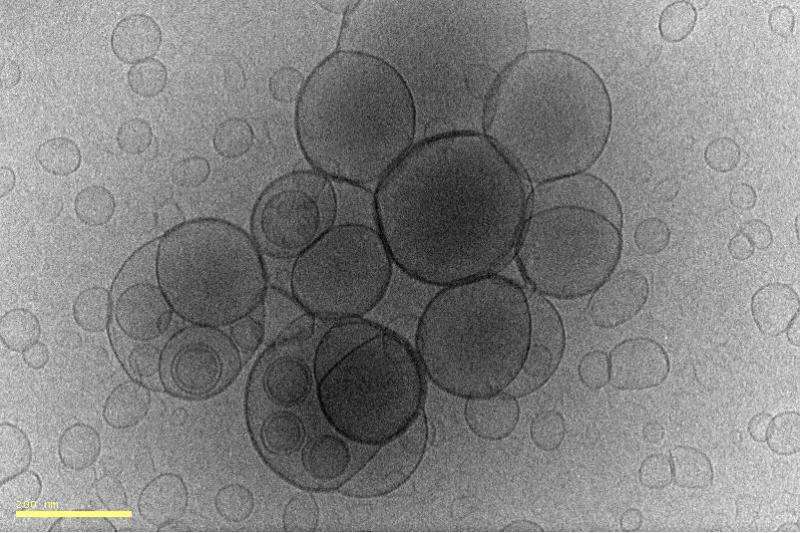Simple fats and amino acids to explain how life began

A research group of the UPV/EHU-University of the Basque Country has explored how the chemical molecules that could have given rise to life were assembled.
Life originated 3.5 billion years ago. It emerged when inanimate chemical molecules gradually assembled themselves and interacted. Eventually, they turned into autonomous systems. As the years passed, they gradually evolved to their current complexity and diversity. A study by the UPV/EHU is studying how the chemical molecules assembled themselves so that life could begin.
DNA, RNA, proteins, membranes, sugars and cells are made up of all kinds of components. In biology, and in studies dealing with the origin of life specifically, it is very common to focus on one of these molecules and advance hypotheses on how life originated by analysing the specific mechanisms related to it. Basically, these studies are looking for the molecule of life, setting out to establish which was the most important molecule in this process, said Kepa Ruiz-Mirazo, researcher in the Biophysics Unit and of the UPV/EHUs Department of Logic and Philosophy of Science. However, life involves activity among a huge variety of molecules and components, and a change of approach has occurred in recent years, with research that takes into account various molecules.
Besides emerging in favour of this fresh approach, Ruiz-Mirazos' group has been able to show that interaction exists between molecules. The group has expertise in research into membranes that are created in prebiotic environments, the study of the dynamics of fatty acids, the precursors of current lipids. The Montpellier group specialises in the synthesis of the first peptides. After combining the expertise of both groups and experimentally blending the fatty acids and the amino acids, researchers identified a strong synergy between them.
The catalysis of the reaction took place when the fatty acids formed compartments. As they are in an aqueous medium, and due to the hydrophobic nature of lipids, they tend to join with each other and form closed compartments; in other words, they take on the function of a membrane. At that time, the membranes obviously weren't biological but chemical in nature, explained Ruiz-Mirazo. In their experiments, they were able to see that the conditions offered by these membranes were favourable for amino acids. The Montpellier group had the prebiotic reactions of the formation of dipeptides very well characterised, so they were able to see that this reaction took place more efficiently in the presence of fatty acids, he added.
Bottom upwards, recreating evolution using simple molecules
Besides demonstrating the synergy between fatty acids and amino acids, Ruiz-Mirazo believes it is very important to have conducted the study using basic chemical components—in other words, molecular precursors. Life emerged out of these basic molecules; therefore, to study its origin we cannot start from the complex phospholipids that are found in today's membranes. We have demonstrated the formation of the first coming together and formation of chains on the basis of molecular precursors. Or to put it another way, we have demonstrated that it is possible to achieve diversity and complexity in biology by starting from chemistry.
In his studies, in addition to the experimental work, Ruiz-Mirazo is studying the origin of life from three pillars or perspectives: Firstly, the experimental field; another is based on theoretical models and computational simulations, which researchers use to analyse the results obtained in the experiments, and the third is a little broader, studying life from a philosophical viewpoint. These three methodologies mutually feed each other—an idea that may emerge in the philosophical analysis leads you to carry out a new simulation, and the results of the simulations mark out the path for designing the experiments.
More information: Sara Murillo-Sánchez et al. Fatty acids' double role in the prebiotic formation of a hydrophobic dipeptide, Chem. Sci. (2016). DOI: 10.1039/C5SC04796J
Provided by University of the Basque Country



















